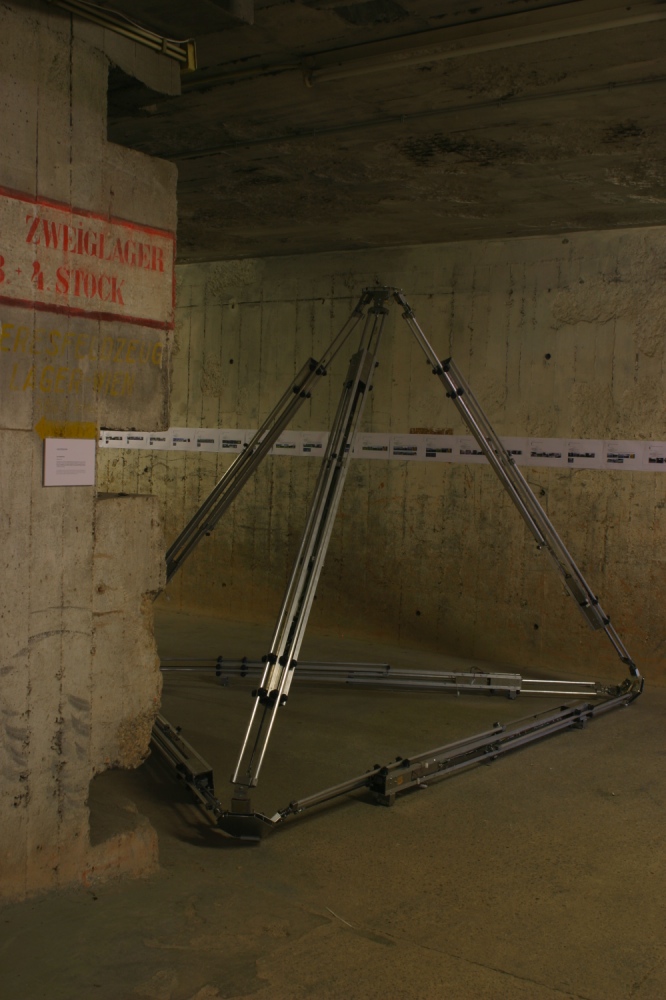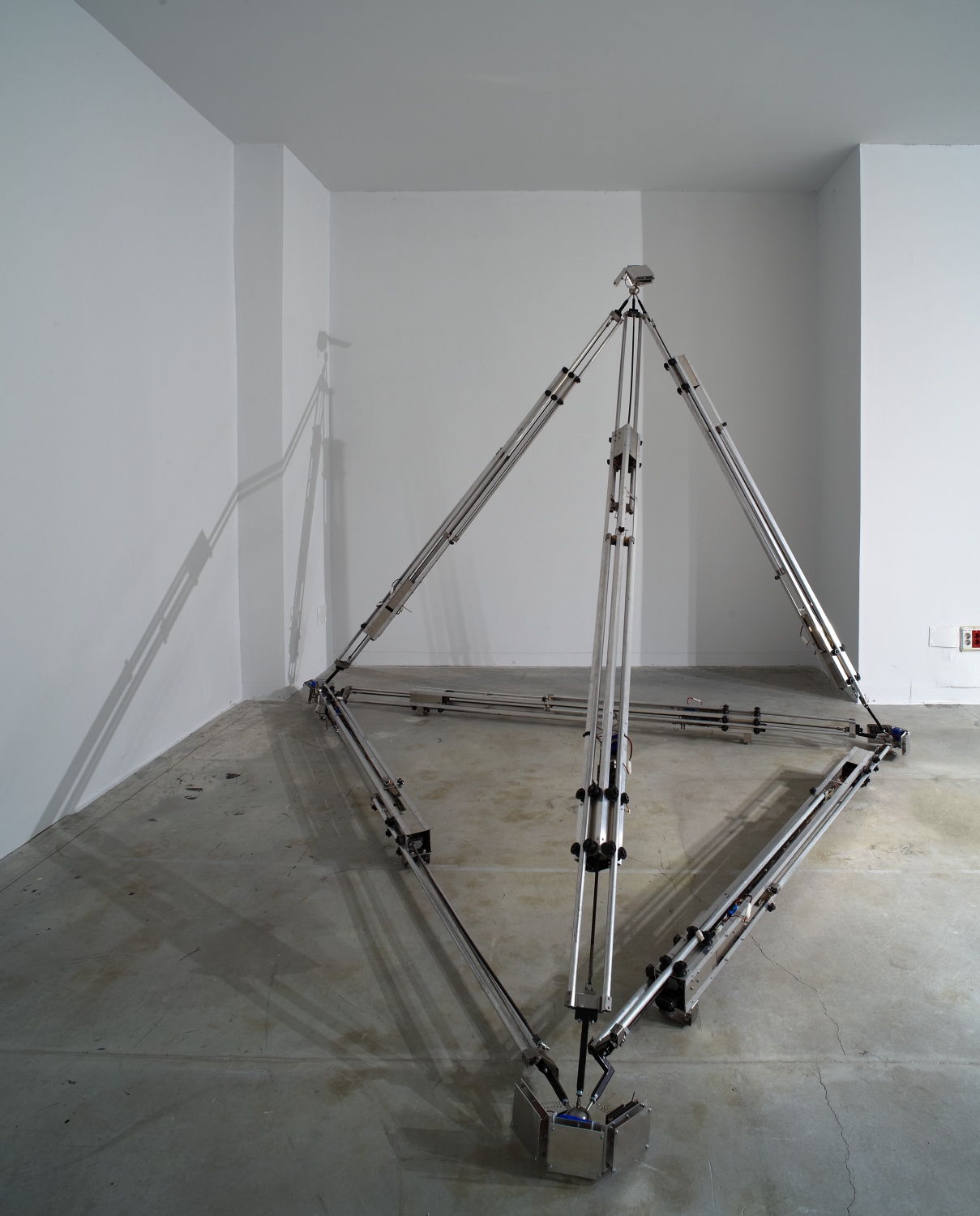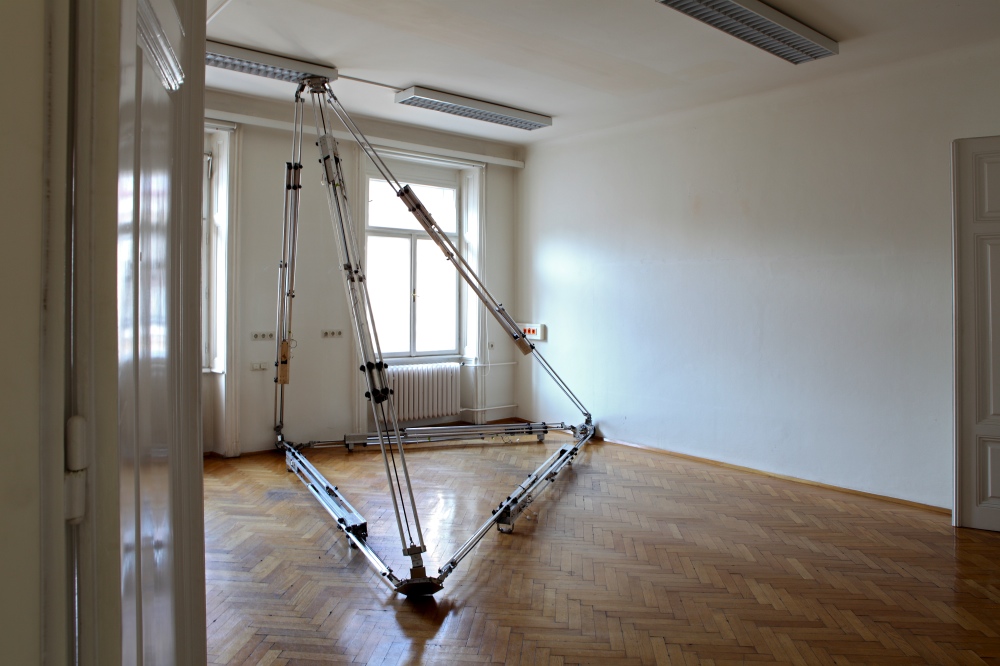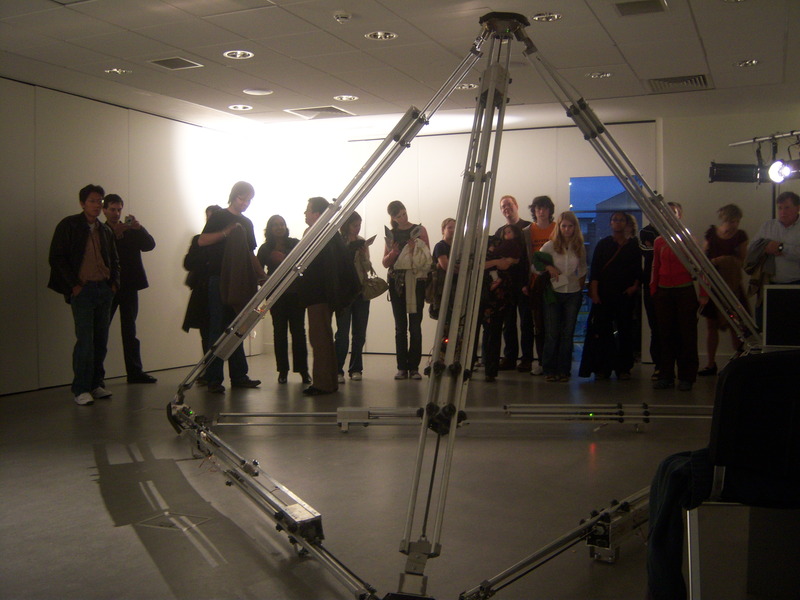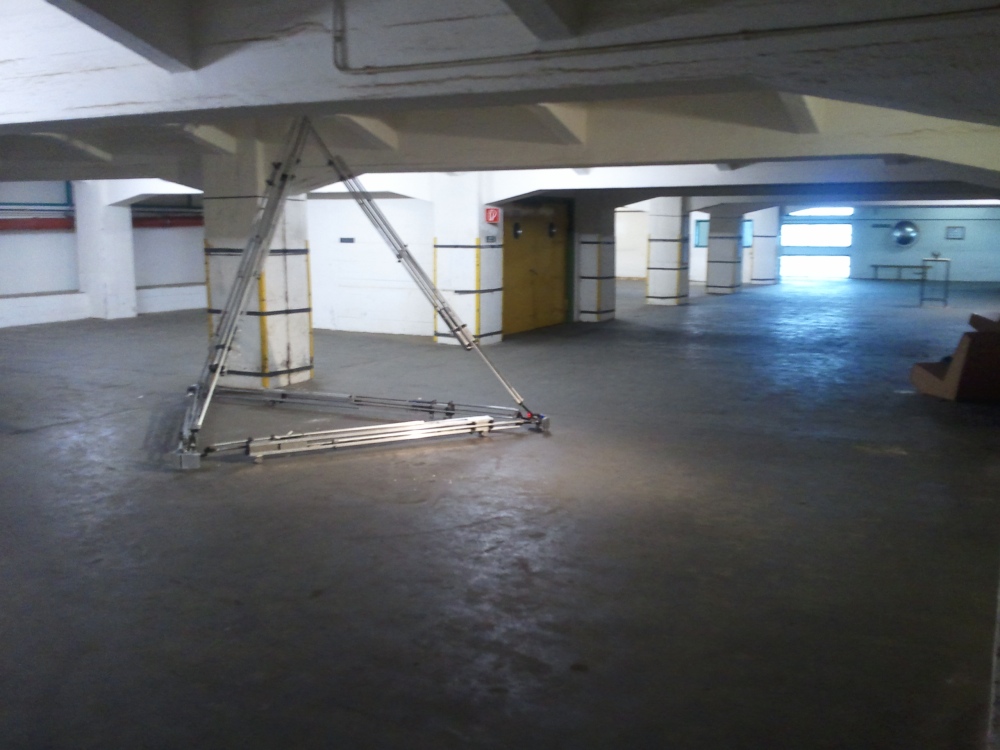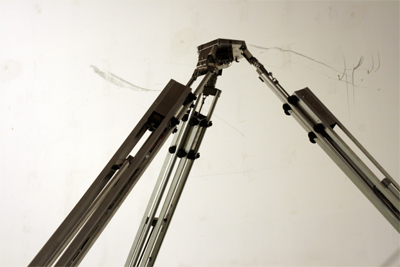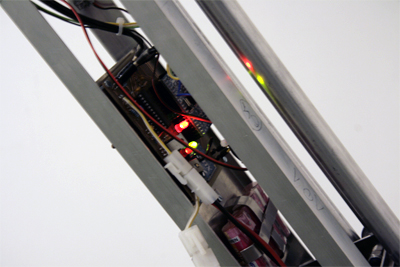Robot
Leo Peschta
2007
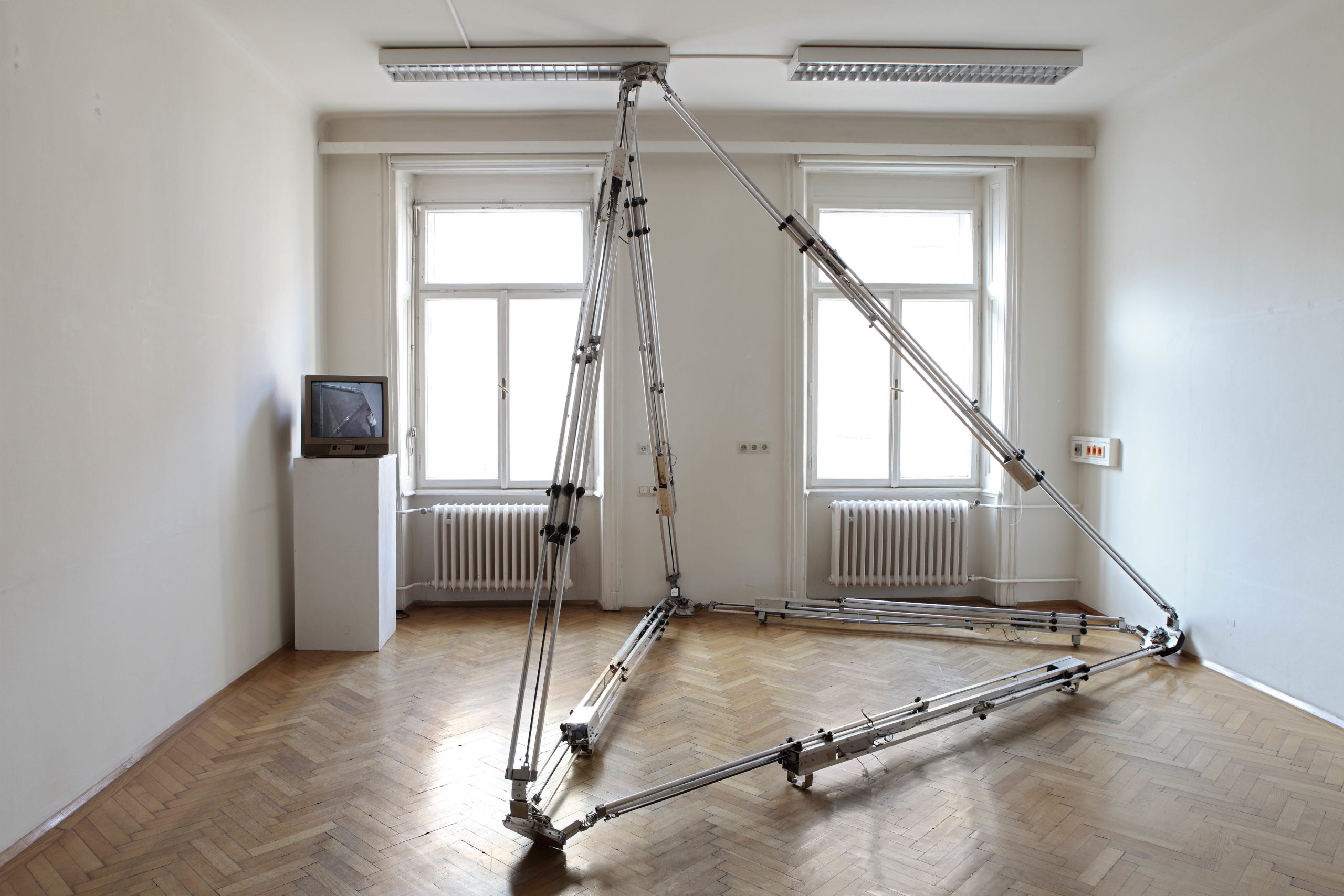
The tetrahedron, the first platonic solid, the strongest polyhedron, an icon of engineering efficiency, manifested in a myriad of biological forms, evidence of the effectiveness of evolutionary design. Der Zermesser captures this doubleness as an adaptive geometry, a minimal geometrical robot which engages in a sensitive relation with architectural space, at a timescale which is somewhere between human and vegetal, expressing its response as permutations of its tetrahedral form. One might call it ‘architaxis’. The formal coherence and elegance of Der Zermesser is carried through to its electronic aspects – the geometrical nodes are also sensorial and computational nodes.
